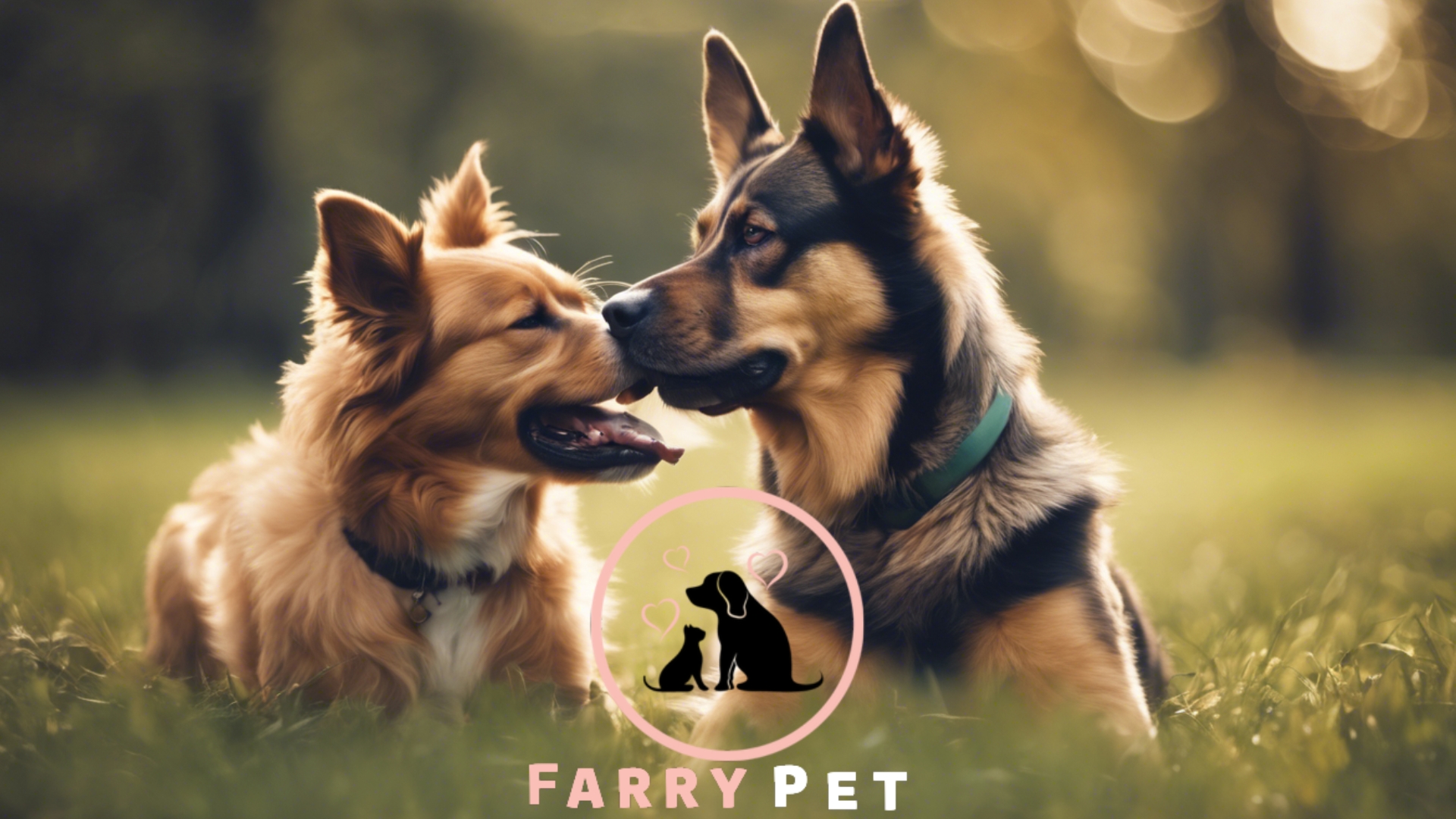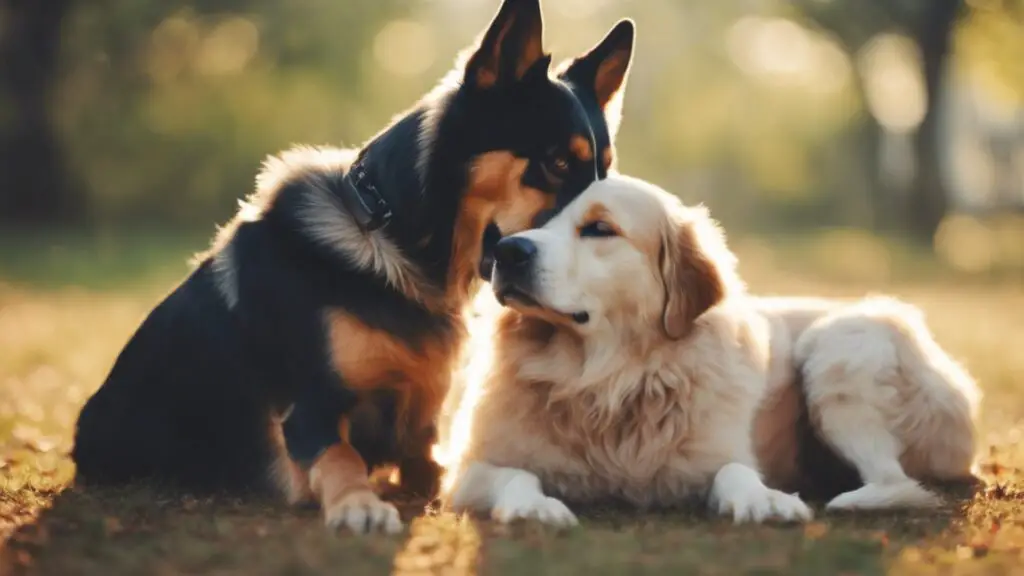
The best time for dog mating is during the female’s estrus cycle, typically beginning nine to ten months from birth. The most fertile period, standing heat, occurs within this cycle.
Determining the optimal mating time for dogs is paramount for successful breeding. Female dogs, or bitches, usually experience their first heat cycle at around six to nine months of age, varying by size and breed.
For effective breeding, the timing must align with the estrus cycle, which happens roughly every six months.
Owners should track the signs of heat, including behavioral changes and physical symptoms, to pinpoint the best mating period. The standing heat phase, lasting from 5 to 9 days, signifies the highest fertility window.
Engaging dogs in mating during this time increases the chances of conception.
Vets often recommend waiting until the second or third estrus cycle before allowing a female dog to mate, ensuring she’s mature physically and mentally for pregnancy and motherhood.
Optimal Mating Timings for Canines
Choosing the right moment for dog breeding is crucial. It ensures healthy offspring. Dog owners must learn about optimal mating timings for canines.
So, let’s explore the best practices for successful canine mating.
Factors Affecting Fertility
Various factors influence when dogs should mate. These include age, health, and breed characteristics. Also, nutrition and environment play a role in canine fertility.
A table of factors is shown below:
| Factor | Effect on Fertility |
| Age | Best between 2-5 years for females, 1-7 for males |
| Health | Good health increases success rates |
| Breed | Some breeds have specific mating considerations |
| Nutrition | Proper diet is essential for reproductive health |
| Environment | Stress-free surroundings promote successful mating |
Recognizing a Female Dog’s Heat Cycle
Identifying the heat cycle is key for breeding. A female dog typically goes into heat twice a year. Signs include:
- Vulva swelling
- Bloody discharge
- Increased urination
- Behavior changes
The optimal mating period is called estrus. It usually starts about 9-10 days after heat begins. This is the time when a female is most fertile. Watch for these signs:
- Flagging behavior
- Acceptance of male
- Clear vaginal discharge
A vet can also confirm the best mating time. They may use tests like:
- Vaginal smears
- Hormone tests
- Ultrasounds
Successful dog mating requires timing. Dog owners should monitor, understand, and respect their pet’s natural cycles.
The Science Behind Canine Reproduction
Dog mating is more than just a moment of connection between two canines—it’s a complex process governed by nature. Understanding the best time for dog mating requires knowledge of the canine reproductive cycle.
Timing is crucial not only for successful mating but also for healthy offspring.
Let’s delve into the science that dictates when your furry friend is ready to reproduce.
Understanding the Estrous Cycle
Bitches have a unique reproductive cycle called the estrous cycle. Unlike humans, they experience heat only a few times per year.
This period of fertility, also known as being “in season,” is when mating is possible and most likely to result in pregnancy. The estrous cycle comprises four phases:
- Proestrus: Preparatory stage with visible bleeding.
- Estrus: Ovulation occurs, and the female is receptive to males.
- Diestrus: Post-estrus phase if pregnancy has occurred.
- Anestrus: Resting phase until the next cycle begins.
The optimal time for mating is during the estrus phase, which lasts 5 to 13 days.
The Role of Hormones in Mating
Hormones play a pivotal role in regulating the estrous cycle and signaling the right time for mating. The primary hormones involved include:
| Hormone | Function |
| Estrogen | Prepares the uterus and signals heat. |
| Luteinizing Hormone (LH) | Triggers ovulation. |
| Progesterone | Maintains pregnancy. |
During the estrus phase, a surge in LH levels indicates ovulation is near. This is the prime time for breeding, typically occurring 2-3 days after the LH surge.
Progesterone levels rise post-ovulation to support a potential pregnancy.
Maximizing Chances of Successful Mating
Deciding to breed your dog involves more than just romantic notions of puppies. Maximizing Chances of Successful Mating requires careful planning.
Understand both dogs’ timing, health, and readiness to enhance success.
Strategic Timing for Breeding
Females come into heat typically every six months. Yet, not every heat cycle is ideal for breeding.
The proestrus and estrus stages, spanning approximately three weeks, are key for successful mating.
- Days nine to fourteen see the female most receptive.
- Monitor signs, like a swollen vulva and bloody discharge turning lighter.
For males, healthy sperm production is crucial. Regular health checks and nutritional support ensure vitality for breeding.
Health Assessments Pre-mating
Health checks are vital for both dogs before mating—schedule vet visits for a full evaluation.
| Checklist Item | Female | Male |
| Genetic Screening | Clearance for hereditary conditions | Clearance for hereditary conditions |
| Vaccination Status | Up-to-date | Up-to-date |
| Reproductive Health | Evaluation of heat cycle | Semen quality test |
| Overall Health | Fitness check, free from parasites | Fitness check, free from parasites |
Preventative care reduces risks. Make sure all vaccinations and parasite treatments are current.
Practical Considerations for Breeders
Choosing the right time for dog mating involves more than just looking at a calendar. Breeders must consider several practical elements to ensure the health and success of both dogs and their future puppies.
Evaluating Genetic Compatibility
Dog breeders should first focus on genetic health. The goal is to match a male and female to produce healthy offspring.
Breeders must compare pedigrees and health clearances. They look for complementary traits and avoid genetic diseases.
Tests for genetic compatibility might include:
- Hip dysplasia certifications
- Eye exams from certified ophthalmologists
- Genetic screenings for breed-specific conditions
Breeders often consult canine geneticists or use online tools to analyze genetic matches.
Creating a Conducive Environment for Mating
A calm, quiet, and controlled environment is essential for successful mating.
The place must be clean, safe, and familiar to the dogs. This reduces stress and increases the chances of a positive mating experience.
Consider these factors:
| Factor | Description |
|---|---|
| Temperature | A comfortable temperature helps both dogs feel at ease. |
| Space | Ample space allows dogs to move without restriction. |
| Privacy | A private area helps reduce distractions and interruptions. |
Breeders should remain patient and observe discreetly to ensure everything goes smoothly.
Dealing With Breeding Challenges
Understanding the best time for dog mating includes navigating through some breeding challenges. Whether you’re a seasoned breeder or a first-time dog owner, you might encounter hurdles during dog mating.
Addressing these challenges swiftly ensures the health and well-being of the female and male dogs involved and increases the chances of successful mating.
Handling Unsuccessful Attempts
Unsuccessful mating can be disheartening, but it’s important to stay patient. Dogs may not always mate successfully on the first try. Factors like timing, compatibility, and the dogs’ experience can affect the outcome.
Keep an eye on the female’s cycle and try again when she is most fertile. Provide a calm environment to reduce stress and encourage natural behaviors. If repeated attempts fail, further investigation is warranted.
When to Seek Veterinary Assistance
At times, you may need expert advice. Don’t hesitate to seek veterinary help if you notice any of the following signs:
- Absence of heat cycle in the female dog
- Visible discomfort or pain during mating
- Abnormal discharge
- Changes in behavior or appetite post-mating
Veterinarians can provide valuable insights into reproductive health and help identify any underlying issues. They may suggest tests, recommend supplements, or advise on better mating practices.
Ethics and Responsibilities in Dog Mating
Understanding the ethics and responsibilities of dog mating is crucial for any dog owner considering breeding. It’s about more than just creating cute puppies.
The health and well-being of the dogs involved must be the forefront concern. This sectional approach will cover key responsibilities and ethical considerations everyone must observe during breeding.
The Moral Implications of Breeding
Breeding dogs responsibly means considering the impact on the breed and the health of the canines. Overpopulation and hereditary diseases are major concerns. Breeders should focus on bettering the breed.
This entails health screenings and understanding the dogs’ lineage. A responsible breeder always prioritizes quality over quantity.
- Screen for hereditary conditions
- Understand the pedigree
- Limit litters to avoid stress
Ensuring the Welfare of the Breeding Dogs
Each dog’s welfare is paramount in the breeding process. Dogs should be of an appropriate age before mating. Nutritional needs, pre-breeding health checks, and a comfortable environment ensure the dogs’ well-being.
Love and care are non-negotiables. After all, these are sentient beings, not just breeding machines.
| Care Aspect | Details |
|---|---|
| Age | Dogs should be mature but not too old |
| Health Checks | Up-to-date vaccinations and screenings |
| Environment | Safe, clean, and stress-free |

Frequently Asked Questions
How Long After Bleeding is a Dog Fertile?
A dog typically becomes fertile about 9-10 days after bleeding starts, during the estrus stage of her cycle.
How Do I Know When My Dog is Ready to Mate?
Your dog may be ready to mate once it reaches sexual maturity. Female dogs typically show signs during estrus, such as a swollen vulva and bloody discharge. Male dogs often display interest by sniffing and mounting behaviors. Always consult with a veterinarian for proper timing and health considerations.
How Many Days Will a Female Dog Let a Male Mount Her?
A female dog is typically receptive to mounting for about 9-10 days during her estrus cycle, which occurs every six months.
When Should I Allow My Dog to Mate?
Allow your dog to mate after reaching sexual maturity—typically after 18 months for both males and females. Ensure they are healthy and have completed relevant health screenings before mating.
What is the Optimal Age for Dog Mating?
Dogs reach sexual maturity between 6 and 24 months, depending on their breed and size, with smaller breeds maturing faster than larger ones.
Conclusion
Determining the optimal mating time for dogs is crucial for breeding success. Tracking the female’s heat cycle and considering breed-specific timing can increase the likelihood of a healthy litter.
Consult with a vet to personalize your approach, ensuring the best outcomes for your canine companions.
Remember, responsible breeding contributes to the welfare of all dogs involved.






